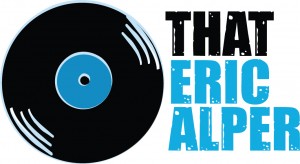Bruce Springsteen’s Nebraska is one of the most hauntingly beautiful albums ever recorded—ten stark, lo-fi songs that captured a side of America rarely heard in popular music. With just his voice, a harmonica, and a four-track recorder, Springsteen created an album that stripped away the anthemic rock of Born to Run and The River, leaving only raw storytelling and the echoes of an empty room. But beyond its reputation as one of the greatest DIY recordings in rock history, Nebraska holds some little-known secrets that make its legacy even more fascinating.
1. It Was Never Supposed to Be Released
Imagine a parallel universe where Nebraska never saw the light of day. That was nearly the case. Springsteen originally recorded these tracks as demos in his bedroom, intending to flesh them out with the E Street Band in the studio. However, after several failed attempts to re-record the songs, Springsteen and producer Jon Landau realized the magic was in the raw, unpolished versions. In the end, the cassette Springsteen carried around in his jeans pocket became the master recording—proving that sometimes, imperfection is perfection.
2. The Album Was Almost Unmasterable
Recording a full album on a four-track cassette recorder might seem charmingly lo-fi now, but it nearly derailed Nebraska’s release. The original tape was so quiet and full of hiss that mastering engineers struggled to prepare it for vinyl. Several top engineers—including Bob Ludwig and Greg Calbi—tried and failed before Dennis King at Atlantic Studios finally figured out how to make it work. The end result? An album that sounds like it’s coming from a ghostly highway radio station, which only adds to its eerie power.
3. Flannery O’Connor Was a Huge Influence
Springsteen’s deep dive into American literature played a significant role in shaping Nebraska, and no writer had a greater impact than Flannery O’Connor. The gothic, fatalistic themes of her short stories resonated with Springsteen, inspiring him to craft characters on the margins of society—people whose lives were shaped by violence, despair, and a search for meaning. He later admitted that O’Connor’s ability to find “the unknowability of God” in her stories influenced songs like “Nebraska” and “Highway Patrolman.”
4. There’s a Lost ‘Electric Nebraska’ Album
One of rock’s great mysteries is what happened to Electric Nebraska. Before committing to the stripped-down versions, Springsteen and the E Street Band recorded full-band arrangements of these songs at The Power Station in New York. While a few of those tracks surfaced later—like “Born in the U.S.A.” and “Pink Cadillac” on later albums—the rest remain unreleased. Max Weinberg has described those sessions as “hard-edged and killing,” but Springsteen has suggested they’ll likely never be heard. That hasn’t stopped fans from hoping.
5. The Album’s Cover Is as Stark as Its Music
The black-and-white photograph that adorns Nebraska’s cover wasn’t taken with the album in mind. Instead, it was an existing image by photographer David Michael Kennedy, who had shot it during a winter drive through the American heartland. Springsteen, wanting the album to feel like a desolate road trip through the dark corners of America, picked the photo immediately. The image, paired with the blood-red title font, became one of the most iconic—and chilling—album covers of all time.







